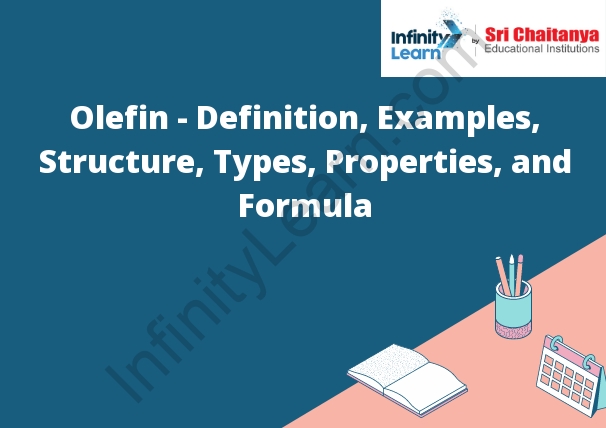Table of Contents
Olefins
An olefin is a hydrocarbon that has at least one carbon-carbon double bond. The simplest olefin is ethylene, which is produced commercially by the cracking of petroleum. Olefins are important intermediates in the manufacture of plastics, synthetic rubber, and other chemicals.
The physical and chemical properties of olefins are determined largely by the number and location of the double bonds. Unsaturated olefins are more reactive than saturated hydrocarbons and tend to form polymers. The presence of a double bond in an olefin makes it more polar than a saturated hydrocarbon and increases its solubility in polar solvents.

Olefins Examples
An olefin is a hydrocarbon that has at least one double bond in its carbon skeleton. Some common olefins are ethylene, propylene, and also butene.
What is an Olefinic Bond?
An olefinic bond is a covalent bond between two carbon atoms that share two electrons. The bond is also known as a double bond because it is made up of two shared electrons.
Name and Formulae of Alkenes
An alkene is a hydrocarbon that has at least one carbon-carbon double bond. The simplest alkene is ethylene (C2H4), which has the formula CH2=CH2. Alkenes named by adding the word “ene” to the name of the corresponding alkane. For example, ethylene named “ethylene,” propylene is named “propylene,” and butene is named “butene.”
The carbon-carbon double bond in an alkene is responsible for the molecule’s chemical reactivity. For example, alkenes can undergo addition reactions, in which a molecule of hydrogen or another species is added to the double bond.
Olefin Structure
The olefin molecule is a hydrocarbon that has a double bond between two carbon atoms.
Types of Olefins
There are three types of olefins: alpha, beta, and gamma.
- Alpha olefins made up of molecules with a carbon-carbon double bond located at the beginning of the chain. These molecules also called ethylene molecules.
- Beta olefins have a carbon-carbon double bond located in the middle of the chain.
- Gamma olefins have a carbon-carbon double bond located at the end of the chain.
Physical Properties of Olefins
The physical properties of olefins depend on the number of carbon atoms in the molecule. Therefore the more carbon atoms in an olefin, the higher the boiling point and the greater the density.
The boiling points of the simplest olefins (ethene, propene, and butene) increase as the number of carbon atoms in the molecule increases. The boiling point of octane, the most complex olefin, is about 350 degrees Celsius.
The densities of olefins also increase as the number of carbon atoms in the molecule increases. The density of ethene is 0.92 grams per cubic centimeter, the density of propene is 0.97 grams per cubic centimeter, and the density of butene is 1.04 grams per cubic centimeter.
Chemical Properties of the Olefins
- The olefins are a group of hydrocarbons that have the general formula CnH2n. The simplest type of alkenes, and they composed of only carbon and hydrogen. The olefins named for their unsaturated nature, which means that they contain at least one double bond between two carbon atoms.
- The olefins are a relatively inert group of hydrocarbons, and they are not particularly reactive. However, they can oxidized to form fatty acids, and they can also polymerized to form plastics and other synthetic materials.
Olefin Chemical Formula
C 2 H 4
Merits of learning from Infinity Learn for Students
- It is a one-stop-shop for all your educational needs.
- It offers a wide range of courses, from basic to advanced levels.
- The courses designed by experts, so you can be sure of the quality of the content.
- The tutorials are easy to follow and also comprehensible.
- The platform is engaging and fun, which makes learning a pleasure.
- It is affordable and there are many payment options available.
- You can access the courses from anywhere, at any time.
- It offers excellent customer support.
- You can track your progress and receive feedback on your performance.
- You can earn certificates of achievement for completing the courses.








